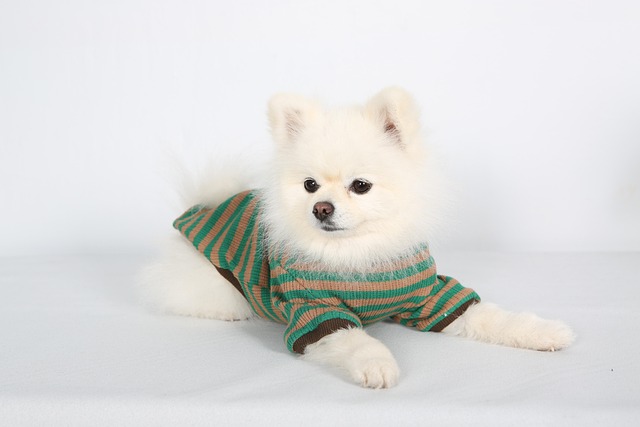
What vitamin is good for dogs' skin
Seeing your dog constantly scratch or noticing dry, flaky skin can make you wonder if a simple vitamin might be the solution.
Puppy teething is one of those milestones often underestimated until you’re suddenly living with a tiny, furry tornado determined to chew its way through your world. Teething marks the period when a puppy’s baby teeth fall out and adult teeth emerge, setting the stage for a lifetime of healthy eating and play. This process isn’t just a matter of dental change; it’s a crucial developmental phase that impacts your puppy’s body and mind. Understanding the puppy teething age and what’s happening beneath the surface can help you navigate this tricky stage with more patience and a lot less frustration.
Most puppies start teething at around three months old, but the worst age for puppy teething often falls between four to six months. During these weeks, discomfort is at its peak. Their gums ache, their mouths feel strange, and the urge to gnaw on anything—shoes, furniture, even hands—becomes almost irresistible. By six months, the teething process usually winds down as the last adult teeth settle in. However, that core period is intense, and both puppy and owner feel every bit of it. While all breeds go through this, larger breeds may experience a slightly longer timeline, but the behavioral rollercoaster remains a universal experience. In the US, responsible pet ownership means being proactive at this age—making sure your home is safe and your puppy isn’t chewing on anything hazardous or illegal under local pet safety ordinances.
Behavioral and emotional changes during this teething window can be surprising, even for seasoned dog owners. Puppies often display increased irritability; they may snap or whine more frequently due to the persistent ache in their gums. Anxiety can creep in, too, especially in sensitive breeds or rescue pups who may already feel uncertain in new environments. Chewing, of course, skyrockets—this isn’t mischief for mischief’s sake but a biological urge to relieve pressure and pain. Some puppies may even regress in their house training or become a bit more mouthy with family members. These puppy teething behavioral changes aren’t just physical; they’re an emotional reaction to discomfort and a new sense of vulnerability. Pet owners sometimes mistake these shifts for emerging personality flaws when, in reality, most of these behaviors fade once teething subsides.
Supporting your puppy through teething is as much about empathy as it is about action. Safe chew toys are essential—rubber toys that can be chilled offer relief and redirect destructive urges. Be sure to avoid items that splinter or are small enough to swallow. Regular, gentle gum massages can also soothe sore mouths, and some owners find that frozen cloths work wonders. Consistency in training matters more now than ever. Instead of scolding when your puppy chews the wrong item, calmly redirect them to an appropriate toy. Reinforce good chewing behaviors with praise or treats, and supervise playtime to prevent accidents. Sleep and comfort are also important; some puppies become clingy or restless, so offering extra snuggles or quiet time in a safe space helps them feel secure. If your puppy seems unusually distressed or loses interest in food, don’t hesitate to consult your vet—sometimes teething can coincide with other health issues. For American pet parents, it’s worth remembering that certain pain relief methods or products might be regulated, so always check with your veterinarian before trying over-the-counter remedies.
Teething is a short chapter in your puppy’s journey, though it can feel endless in the moment. The physical and emotional changes during puppy teething may test your patience, but these challenges are temporary. Staying supportive, empathetic, and prepared will not only protect your shoes and sanity but will also help your puppy grow into a confident, well-adjusted adult dog. Every chewed slipper is a step toward a happier, healthier companion. With a little understanding and a lot of love, you’ll both come out on the other side stronger—and with a full set of sparkling new teeth to show for it.

Seeing your dog constantly scratch or noticing dry, flaky skin can make you wonder if a simple vitamin might be the solution.

If you’re a new dog parent in the US—maybe you’re sitting on your Portland apartment couch, staring at your 1-year-old Australian Shepherd

If you’re a new dog parent in the US—maybe you’re sitting on your Atlanta apartment floor, holding your 6-week-old Beagle puppy, Daisy, who’s curled up in your lap

If you’re a new dog parent in the US—maybe you’re standing in your Denver apartment’s kitchen, staring at a bag of high-quality puppy kibble and a bottle

Seeing your puppy grow daily is amazing, and it’s natural to want to give them every advantage, including supplements.

Brown stains on white dog fur aren’t just unsightly—they can also hint at underlying issues like tear duct irritation or poor grooming habits, which matter even more when you’re following local pet care laws.